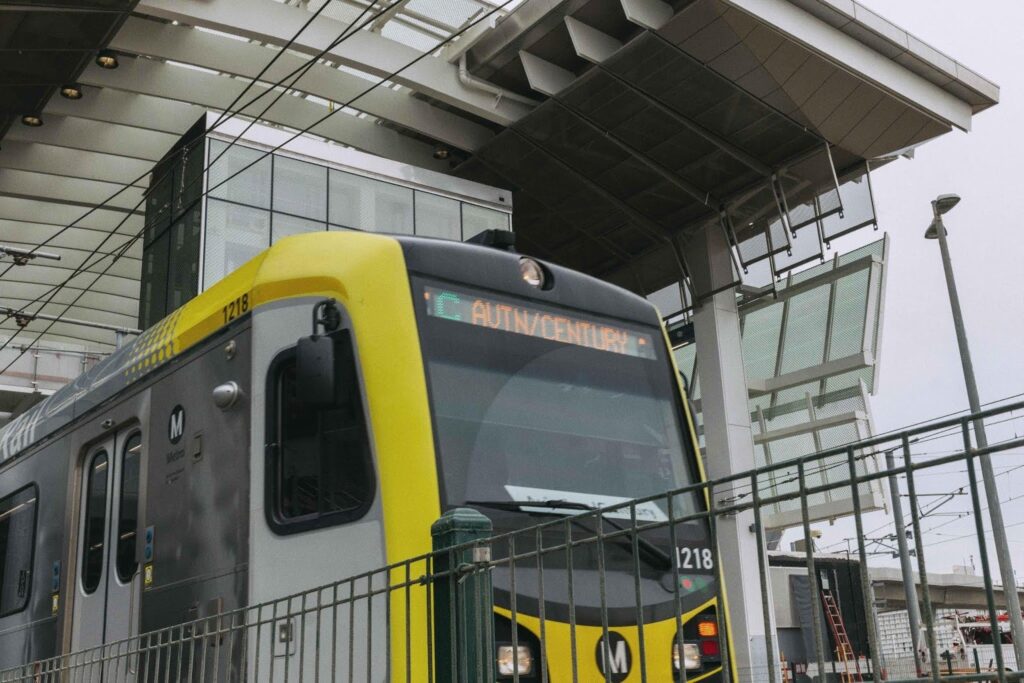
What does Oberstar’s proposal do for the New Starts transit program?
 |
| MetroRail, Preston Station, Downtown Houston Originally uploaded by euthman |
| Riders wait for the train at a stop on Houston’s new light rail line |
Americans are taking the train (and the bus) like never before, and public transportation ridership reached its highest level in more than 50 years in 2008. More than 25 new light rail or streetcar systems have opened in the last 30 years, and communities across the country are looking to relieve congestion, spur urban development, and provide their residents with more options for getting around.
In the last two years, new light rail lines have opened in what might be considered the unlikely locales of Phoenix, Arizona, Houston, Texas, and Charlotte, North Carolina. According to numbers from Reconnecting America, the newly-opened Hiawatha Line in Minneapolis and the Red Line in Houston outperformed their ridership projections 15 years ahead of schedule.
What’s clear from these examples is that cities of all sizes are looking to meet the burgeoning demand for quality public transportation service. Of course, with Chairman James Oberstar’s 90-page proposal for the next transportation bill coming out this morning from the Transportation and Infrastructure Committee, we are left with an important question — how would these current or future transit systems fare under his proposed program?
Getting approval for New and Small Starts — two federal programs that distribute funds for the construction of transit capital projects — has become a cumbersome process, taking an average of 10 years for transit projects to move through planning and design phases to receive a grant.
Under the previous administration, the Federal Transit Administration (FTA) began unduly weighting cost-effectiveness (CEI) — or how much travel time was saved per dollar spent — as the primary factor when considering which projects to fund. As Oberstar’s proposal states, this method has given “inadequate consideration to other important benefits that new transit projects bring to communities.” Benefits such as economic development spurred by new transit lines, increased access to jobs and housing, reduced emissions and energy consumption per capita and the efficient land use and walkable neighborhoods that often result from new transit investments have been swept aside in favor of this “cost effectiveness” metric.
Chairman Oberstar’s proposal for the transportation bill contains some proposed revisions to the New/Small Starts program that could speed up the approval process and make sure that all of the benefits of new public transportation service are considered.
Oberstar’s proposal contains two key reforms: The first would streamline the program application and approval process by eliminating overly burdensome steps and paperwork. (p.43) And perhaps more importantly, his second proposal “equalizes the treatment of proposed transit projects and elevates the importance of the benefits that will occur in the community once the project is built.” This essentially means that the other positive benefits from transit would be considered when deciding what projects to fund.
Underneath that recommendation in the proposal is a list of some new requirements that could even the playing field and broaden the range of grants given out to new transit projects. Here are three notable ones:
- Require the FTA to consider all benefits of proposed projects in relation to the proposed Federal investment level.
- Eliminate the requirement that projects be rated based on “cost-effectiveness,” which considers time savings to users as the only benefit of projects.
- Require FTA to weigh all benefits comparably, including economic development, energy savings, increased mobility and access, and congestion relief.
Hopefully, these two reforms would streamline the New & Small Starts process and ensure that the federal governments considers more of the benefits that transit brings to communities when deciding which projects to fund. But the details in the full bill will be key. The outline lacks some concrete information on how much focus will be placed on creating transit-oriented development and affordable housing — both of which can help boost ridership numbers and cost-effectiveness. If we want to accurately account for all potential benefits of transit investments, T4 America believes that we need to link development, housing and public transportation to reflect the deep connection between these issues.



